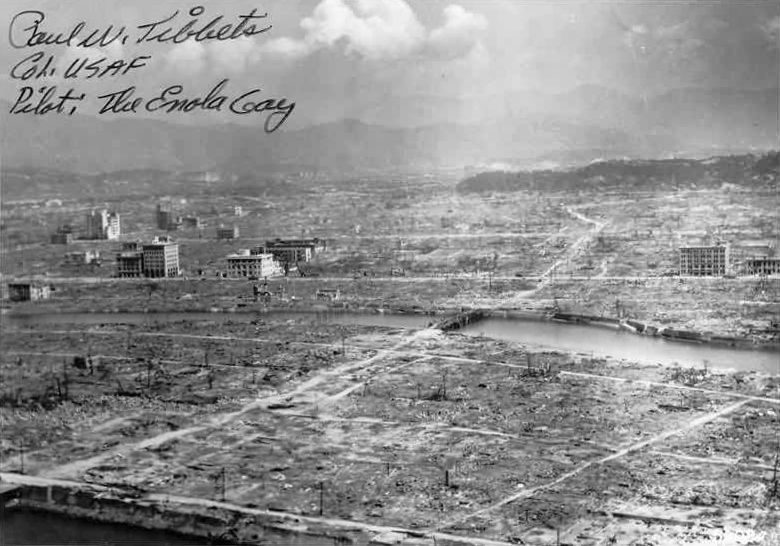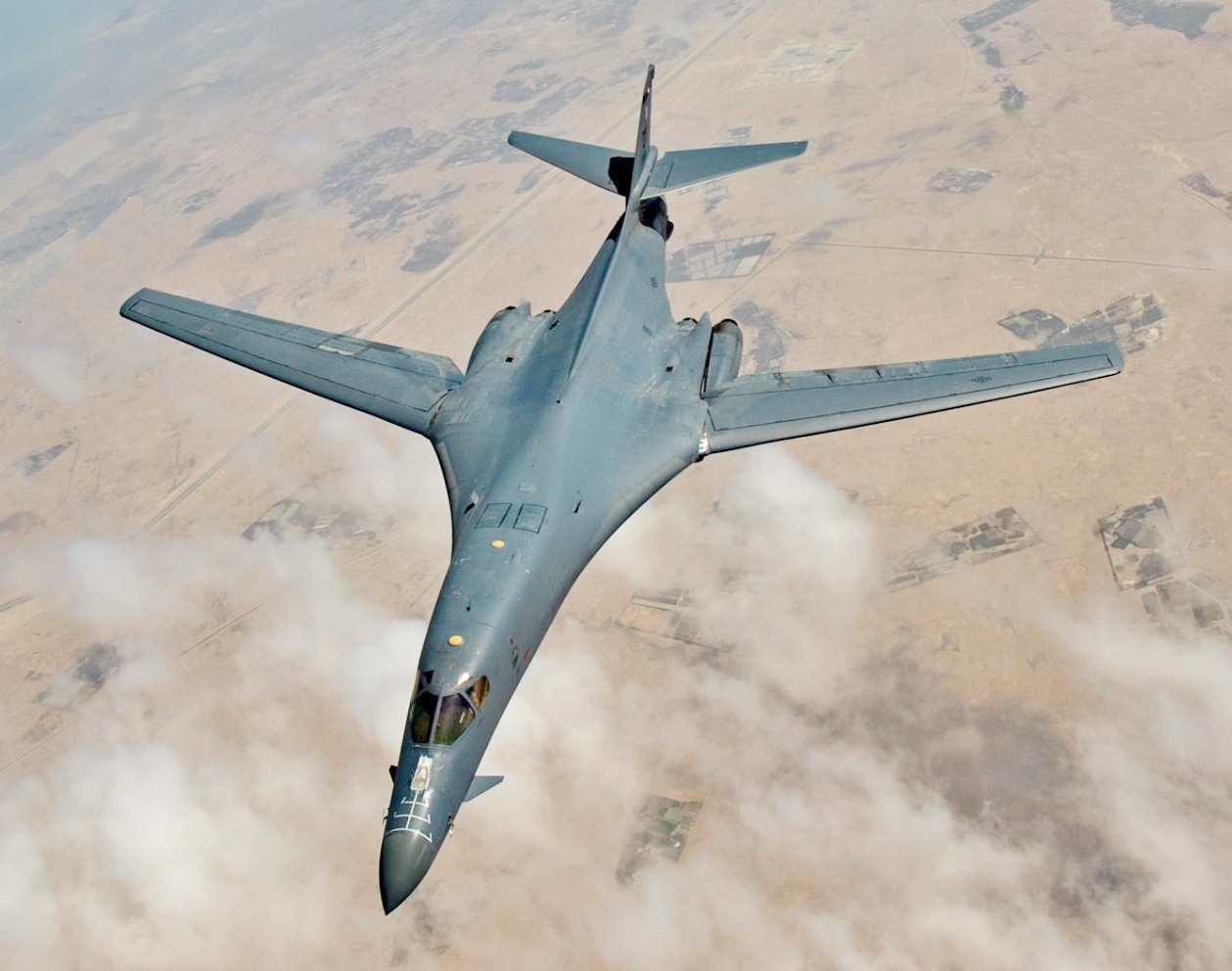|
Mutual Assured Destruction
Mutual assured destruction (MAD) is a doctrine of military strategy and national security policy which posits that a full-scale use of nuclear weapons by an attacker on a nuclear-armed defender with second-strike capabilities would result in the complete annihilation of both the attacker and the defender. It is based on the theory of rational deterrence, which holds that the threat of using strong weapons against the enemy prevents the enemy's use of those same weapons. The strategy is a form of Nash equilibrium in which, once armed, neither side has any incentive to initiate a conflict or to disarm. The result may be a nuclear peace, in which the presence of nuclear weapons decreases the risk of crisis escalation, since parties will seek to avoid situations that could lead to the use of nuclear weapons. Proponents of nuclear peace theory therefore believe that controlled nuclear proliferation may be beneficial for global stability. Critics argue that nuclear proliferation i ... [...More Info...] [...Related Items...] OR: [Wikipedia] [Google] [Baidu] |
Strategic Bomber
A strategic bomber is a medium- to long-range Penetrator (aircraft), penetration bomber aircraft designed to drop large amounts of air-to-ground weaponry onto a distant target for the purposes of debilitating the enemy's capacity to wage war. Unlike tactical bombing, tactical bombers, Penetrator (aircraft), penetrators, fighter-bombers, and attack aircraft, which are used in air interdiction operations to attack enemy combatants and military equipment, strategic bombers are designed to fly into enemy territory to destroy strategic targets (e.g., infrastructure, logistics, Military base, military installations, factories, etc.). In addition to strategic bombing, strategic bombers can be used for tactical bombing, tactical missions. There are currently only three countries that operate strategic bombers: the United States, Russia and China. The modern strategic bomber role appeared after Strategic bombing during World War II, strategic bombing was widely employed, and Atomic bombing ... [...More Info...] [...Related Items...] OR: [Wikipedia] [Google] [Baidu] |
Herman Kahn
Herman Kahn (February 15, 1922 – July 7, 1983) was an American physicist and a founding member of the Hudson Institute, regarded as one of the preeminent futurists of the latter part of the twentieth century. He originally came to prominence as a military strategist and systems theorist while employed at the RAND Corporation. He analyzed the likely consequences of nuclear war and recommended ways to improve survivability during the Cold War. Kahn posited the idea of a "winnable" nuclear exchange in his 1960 book '' On Thermonuclear War'', for which he was one of the historical inspirations for the title character of Stanley Kubrick's classic black comedy film satire '' Dr. Strangelove''.Paul Boyer, 'Dr. Strangelove' in Mark C. Carnes (ed.), ''Past Imperfect: History According to the Movies'', New York, 1996. In his commentary for ''Fail Safe'', director Sidney Lumet remarked that the Professor Groeteschele character is also based on Herman Kahn. Kahn's theories contributed ... [...More Info...] [...Related Items...] OR: [Wikipedia] [Google] [Baidu] |
Second-strike Capability
In nuclear strategy, a retaliatory strike or second-strike capability is a country's assured ability to respond to a nuclear attack with powerful nuclear retaliation against the attacker. To have such an ability (and to convince an opponent of its viability) is considered vital in nuclear deterrence, as otherwise the other side might attempt to try to win a nuclear war in one massive first strike against its opponent's own nuclear forces. Theory The possession of second-strike capabilities counters a first-strike nuclear threat and can support a no first use nuclear strategy. Reciprocal second-strike capabilities usually cause a mutual assured destruction defence strategy, though one side may have a lower level minimal deterrence response. Second-strike capabilities can be further strengthened by implementing fail-deadly mechanisms. These mechanisms create a threshold and guaranteed consequences if that threshold is breached. For instance, a threshold may be for an allied nati ... [...More Info...] [...Related Items...] OR: [Wikipedia] [Google] [Baidu] |
Arms Race
An arms race occurs when two or more groups compete in military superiority. It consists of a competition between two or more State (polity), states to have superior armed forces, concerning production of weapons, the growth of a military, and the aim of superior military technology. Unlike a racing, sporting race, which constitutes a specific event with winning interpretable as the outcome of a singular project, arms races constitute spiralling systems of on-going and potentially open-ended behavior. The existing scholarly literature is divided as to whether arms races correlate with war. International-relations scholars explain arms races in terms of the security dilemma, engineering spiral models, states with Revisionist state, revisionist aims, and Deterrence theory, deterrence models. Examples Pre-First World War naval arms race From 1897 to 1914, a Anglo-German naval arms race, naval arms race between the United Kingdom and German Empire, Germany took place. Br ... [...More Info...] [...Related Items...] OR: [Wikipedia] [Google] [Baidu] |
Proxy War
In political science, a proxy war is an armed conflict where at least one of the belligerents is directed or supported by an external third-party power. In the term ''proxy war'', a belligerent with external support is the ''proxy''; both belligerents in a proxy war can be considered proxies if both are receiving foreign military aid from a third party country. Acting either as a nation-state government or as a conventional force, a proxy belligerent acts in behalf of a third-party state sponsor. A proxy war is characterised by a direct, long-term, geopolitical relationship between the third-party sponsor states and their client states or non-state clients, thus the political sponsorship becomes military sponsorship when the third-party powers fund the soldiers and their ''matériel'' to equip the belligerent proxy-army to launch and fight and sustain a war to victory, and government power. However, the relationship between sponsors and proxies can be characterized by princ ... [...More Info...] [...Related Items...] OR: [Wikipedia] [Google] [Baidu] |
Soviet Union
The Union of Soviet Socialist Republics. (USSR), commonly known as the Soviet Union, was a List of former transcontinental countries#Since 1700, transcontinental country that spanned much of Eurasia from 1922 until Dissolution of the Soviet Union, it dissolved in 1991. During its existence, it was the list of countries and dependencies by area, largest country by area, extending across Time in Russia, eleven time zones and sharing Geography of the Soviet Union#Borders and neighbors, borders with twelve countries, and the List of countries and dependencies by population, third-most populous country. An overall successor to the Russian Empire, it was nominally organized as a federal union of Republics of the Soviet Union, national republics, the largest and most populous of which was the Russian SFSR. In practice, Government of the Soviet Union, its government and Economy of the Soviet Union, economy were Soviet-type economic planning, highly centralized. As a one-party state go ... [...More Info...] [...Related Items...] OR: [Wikipedia] [Google] [Baidu] |
Cold War
The Cold War was a period of global Geopolitics, geopolitical rivalry between the United States (US) and the Soviet Union (USSR) and their respective allies, the capitalist Western Bloc and communist Eastern Bloc, which lasted from 1947 until the dissolution of the Soviet Union in 1991. The term ''Cold war (term), cold war'' is used because there was no direct fighting between the two superpowers, though each supported opposing sides in regional conflicts known as proxy wars. In addition to the struggle for ideological and economic influence and an arms race in both conventional and Nuclear arms race, nuclear weapons, the Cold War was expressed through technological rivalries such as the Space Race, espionage, propaganda campaigns, Economic sanctions, embargoes, and sports diplomacy. After the end of World War II in 1945, during which the US and USSR had been allies, the USSR installed satellite state, satellite governments in its occupied territories in Eastern Europe and N ... [...More Info...] [...Related Items...] OR: [Wikipedia] [Google] [Baidu] |
Prompt Global Strike
Conventional Prompt Strike (CPS), formerly called Prompt Global Strike (PGS), is a United States Armed Forces, United States military effort to develop a system that can deliver a precision-guided munition, precision-guided conventional weapon strike anywhere in the world within one hour, in a similar manner to a thermonuclear weapon, nuclear intercontinental ballistic missile, ICBM. Such a weapon would allow the United States to respond far more swiftly to rapidly emerging threats than is possible with conventional forces. A CPS system could also be useful during a nuclear warfare, nuclear conflict, potentially replacing the use of nuclear weapons against up to 30% of targets. The CPS program encompasses numerous established and emerging technologies, including conventional surface-launched missiles and air- and submarine-launched hypersonic missiles. System The CPS system is intended to complement existing American rapid-response forces, such as Forward-basing, Forward Deploye ... [...More Info...] [...Related Items...] OR: [Wikipedia] [Google] [Baidu] |
Cyber Spying
Cyber espionage, cyber spying, or cyber-collection is the act or practice of obtaining secrets and information without the permission and knowledge of the holder of the information using methods on the Internet, networks or individual computers through the use of proxy servers, cracking techniques and malicious software including Trojan horses and spyware. Cyber espionage can be used to target various actors – individuals, competitors, rivals, groups, governments, and others – in order to obtain personal, economic, political or military advantages. It may wholly be perpetrated online from computer desks of professionals on bases in far away countries or may involve infiltration at home by computer trained conventional spies and moles or in other cases may be the criminal handiwork of amateur malicious hackers and software programmers. History Cyber spying started as far back as 1996, when widespread deployment of Internet connectivity to government and corporate systems ... [...More Info...] [...Related Items...] OR: [Wikipedia] [Google] [Baidu] |
Fail-deadly
Fail-deadly is a concept in nuclear military strategy that encourages deterrence by guaranteeing an immediate, automatic, and overwhelming response to an attack, even if there is no one left to trigger such retaliation. The term ''fail-deadly'' was coined as a contrast to ''fail-safe''. Fail-deadly can refer to specific technology components, or the controls system as a whole. The United Kingdom's fail-deadly policies delegate strike authority to submarine commanders in the event of a loss of command (using letters of last resort), ensuring that even when uncoordinated, nuclear retaliation can be carried out. See also * AN/DRC-8 Emergency Rocket Communications System * * * '' Dr. Strangelove'' * * * Mutual assured destruction (MAD) * * * Two Generals' Problem * Dead Hand Dead Hand, also known as Perimeter (, with the GRAU Index 15E601, Cyrillic script, Cyrillic: 15Э601), is a Cold War–era automatic or semi-automatic nuclear weapons control system (similar in co ... [...More Info...] [...Related Items...] OR: [Wikipedia] [Google] [Baidu] |
Launch On Warning
Launch on warning (LOW), or fire on warning, is a strategy of nuclear weapon retaliation where a retaliatory strike is launched upon warning of enemy nuclear attack and while its missiles are still in the air, before detonation occurs. It gained recognition during the Cold War between the Soviet Union and the United States. With the invention of intercontinental ballistic missiles (ICBMs), launch on warning became an integral part of mutually-assured destruction (MAD) theory. US land-based missiles can reportedly be launched within 5 minutes of a presidential decision to do so and submarine-based missiles within 15 minutes. History Before the introduction of intercontinental ballistic missiles (ICBMs), the US Strategic Air Command (SAC) had multiple bombers on patrol at all times in a program known as Operation Chrome Dome. In the event of a Soviet nuclear strike, SAC would order its already-airborne bombers to fly to the other country and to drop their nuclear payload on p ... [...More Info...] [...Related Items...] OR: [Wikipedia] [Google] [Baidu] |
Pre-emptive Nuclear Strike
In nuclear strategy, a first strike or preemptive strike is a preemptive surprise attack employing overwhelming force. First strike capability is a country's ability to defeat another nuclear power by destroying its arsenal to the point where the attacking country can survive the weakened retaliation while the opposing side is left unable to continue war. The preferred methodology is to attack the opponent's strategic nuclear weapon facilities (missile silos, submarine bases, bomber airfields), command and control sites, and storage depots first. The strategy is called counterforce. Historical background ''First-strike attack'', the use of a nuclear first strike capability, was greatly feared during the Cold War between NATO and the Soviet Bloc. At various points, fear of a first strike attack existed on both sides. Misunderstood changes in posture and well understood changes in technology used by either side often led to speculation regarding the enemy's intentions. 1948– ... [...More Info...] [...Related Items...] OR: [Wikipedia] [Google] [Baidu] |




